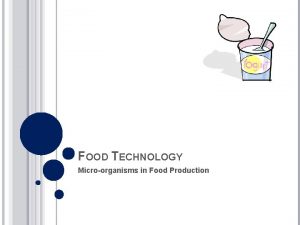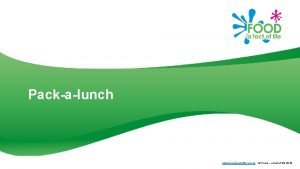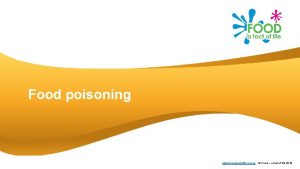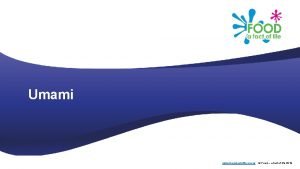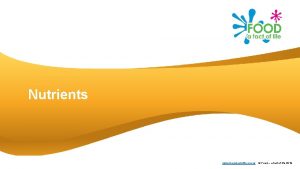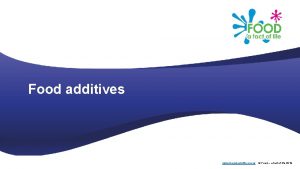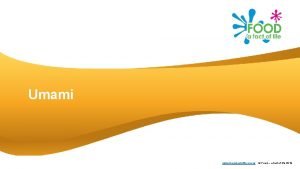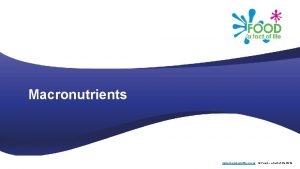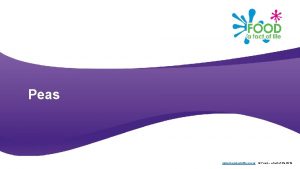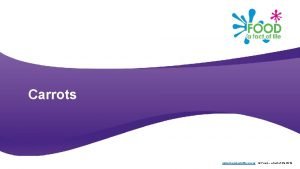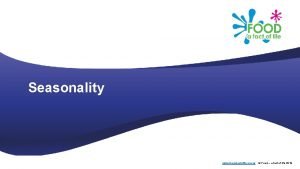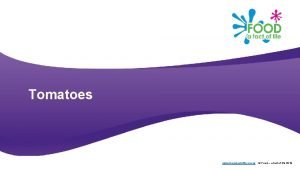Mycoprotein www foodafactoflife org uk Food a fact









- Slides: 9

Mycoprotein www. foodafactoflife. org. uk © Food – a fact of life 2019

Mycoprotein is a form of protein that is derived from a naturally occurring fungus called Fusarium venenatum. It has been produced as a vegetarian, and sometimes vegan, dietary alternative to meat products. Although not derived from meat products, it has a similar texture to some meat. www. foodafactoflife. org. uk © Food – a fact of life 2019

History of mycoprotein The term ‘mycoprotein’ is derived from the Greek for ‘fungi protein’. Research into developing mycoprotein began in the 1960 s. There was a significant period of research and development before Fusarium venenatum was identified as the fungus that would be used and a product was developed. Mycoprotein was first sold in the UK, by food company Quorn, in 1985. www. foodafactoflife. org. uk © Food – a fact of life 2019

The processing of mycoprotein The Fusarium venenatum fungus is extracted from the soil and grown via fermentation using glucose as a fuel source. It is then exposed to steaming, chilling and freezing. This creates the meat-like texture of mycoprotein. www. foodafactoflife. org. uk © Food – a fact of life 2019

The processing of mycoprotein In the later stages of processing, egg albumin is added as a binder to help shape the product. In vegan mycoprotein products, potato extract is used as an alternative. The product is then frozen so it can be transported to supermarkets and sold. MIX SHAPE (fiber alignments) COOK (heat set proteins) FREEZE TEXTURIZATION READY TO COOK www. foodafactoflife. org. uk © Food – a fact of life 2019

Is mycoprotein suitable for vegans? A vegan is someone who does not consume any food derived from animal sources, including meat, fish, eggs, dairy and honey. This means that, due to the use of egg albumin, and sometimes small amounts of milk, in the production of mycoprotein, it is not classed as vegan. However, recent processing changes have meant that some products are now classified as vegan as they do not use any egg in their production. Potato extract is used instead of egg albumin in vegan ranges. www. foodafactoflife. org. uk © Food – a fact of life 2019

Nutritional composition Mycoprotein is high in protein, high in fibre and low in saturated fat. Compared with other plant based protein sources, such as beans and pulses, it tends to be higher in protein. The nutritional composition of ‘quorn pieces’ is summarised in the table. Nutrient Amount per 100 g of mycoprotein pieces* Energy 73 kcals Protein 14 g Fat 1. 4 g Saturated fat 0. 4 g AOAC fibre 8. 3 g Iron 0. 6 mg Riboflavin 0. 39 mg *figures for ‘as purchased’ - source: Mc. Cance and Widdowson’s www. foodafactoflife. org. uk © Food – a fact of life 2019

Mycoprotein types There a number of mycoprotein products that are sold including: • mince; • cutlets; • nuggets; • burgers; • ready-meals. www. foodafactoflife. org. uk © Food – a fact of life 2019

Mycoprotein For further information, go to: www. foodafactoflife. org. uk © Food – a fact of life 2019
